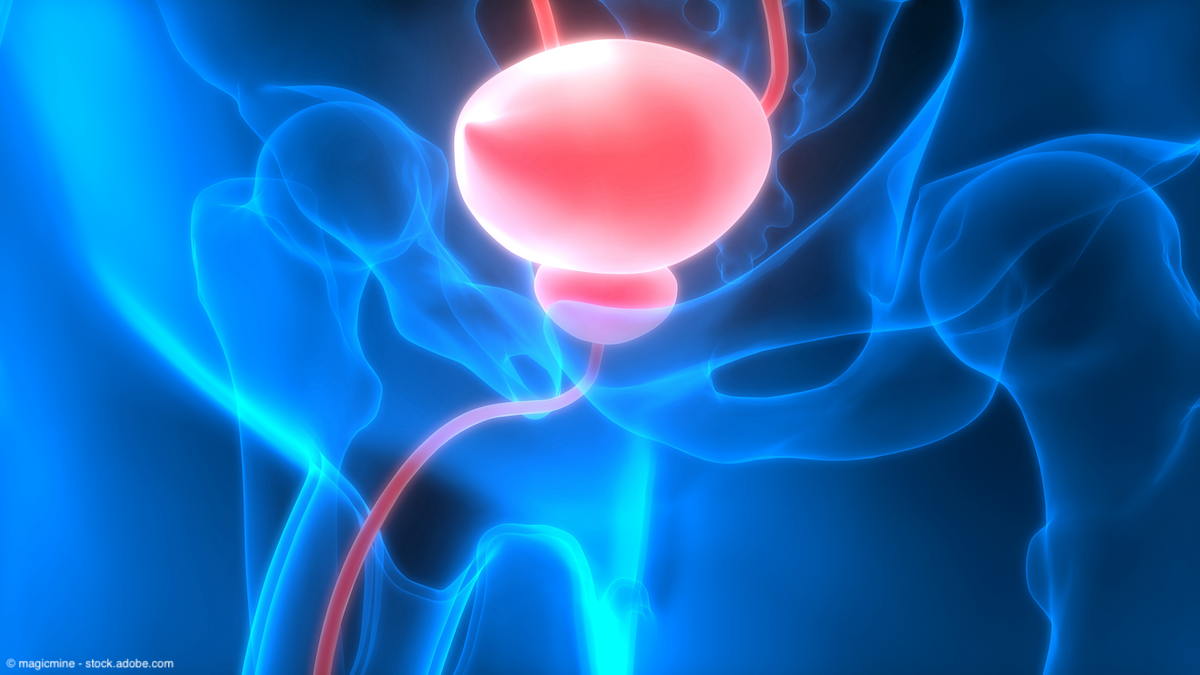Article
Peroneal electrical transcutaneous neuromodulation is found safe and effective in OAB
Author(s):
"The results of this study demonstrate that peroneal eTNM using the URIS neuromodulation system is safe, well tolerated, and effective, with over 85% of patients experiencing clinically significant improvement in most bothersome OAB symptoms," says Jan Krhut, PhD.
Peroneal electrical transcutaneous neuromodulation (peroneal eTNM) led to lower incidence of treatment-related adverse events and a better benefit-risk profile compared with the standard solifenacin (Vesicare) in the treatment of female patients with treatment-naïve overactive bladder (OAB), according to data presented in the Journal of Urology.1
Patients were randomized 2:1 to 12 weeks of treatment with either daily peroneal eTNM (n=47) or solifenacin 5 mg orally once daily (n=25).

"The results of this study demonstrate that peroneal eTNM using the URIS neuromodulation system is safe, well tolerated, and effective, with over 85% of patients experiencing clinically significant improvement in most bothersome OAB symptoms. Importantly, peroneal eTNM is associated with significantly lower incidence of treatment-related adverse events compared to solifenacin. The results of this clinical trial have demonstrated that URIS neuromodulation system could provide an important new non-invasive modality to oral treatment for patients suffering with OAB,” said lead investigator of the URIS trial, Jan Krhut, PhD, in a news release on the findings.2 Krhut is a professor of urology at University of Ostrava.
The international, prospective URIS trial enrolled 77 female patients with treatment-naïve OAB, of which 71 completed the study. Patients were randomized 2:1 to 12 weeks of treatment with either daily peroneal eTNM (n=47) or solifenacin 5 mg orally once daily (n=25). The primary end point was safety.
In the peroneal eTNM cohort, 25/51 patients (49%) reported 43 adverse events (AEs), compared with the solifenacin cohort, of which 18/25 patients (72%) reported 34 AEs (P = .058). Among all patients, the peroneal eTNM cohort also had 6/51 (12%) patients report 10 treatment-related adverse events (TRAEs), compared with the solifenacin cohort which had 12/25 (48%) report 15 TRAEs (P < .001).
Both treatments also led to clinically meaningful improvements in efficacy measures in a post hoc analysis, which included symptom scores for voiding frequency, Patient Perception of Intensity of Urgency Scale (PPIUS) grade 3+4 episodes, nocturia episodes, voided volume/micturition, level of urgency, and OAB-V8 total score. At 12 weeks, 87% of patients in the peroneal eTNM group had at least a 50% reduction in the number of PPIUS grade 3+4 urgency episodes compared with their baseline, vs 75% in the solifenacin group (P = .195) The 87% responder rate observed in the peroneal eTNM group is the highest to be reported in OAB clinical literature.
The proportion of patients reporting no PPIUS grade 3+4 urgency episodes at the end-of-treatment visit was greater in the peroneal eTNM group (38%) compared with the solifenacin group (25%). Further, 65% of patients in the peroneal eTNM cohort had a 100% reduction in their urge urinary incontinence episodes, compared with 56% in the solifenacin cohort.
Investigators also used scores from the European Quality of Life-5 Dimensions questionnaire(EQ-5D-5L) and the European Quality of Life 5 Dimensions visual analog scale (EQ-5D VAS) to assess quality of life. Results from both indexes showed an improvement in the median value from baseline visit to end of treatment visit in the peroneal eTNM arm compared with the solifenacin group, which experienced no change over time.
Chief Medical Officer of Stimvia, Roman V. Dvorak, MD, PhD, concluded in the news release,“Over hundreds of millions worldwide suffer from OAB symptoms, and more than 80% of patients cannot find relief due to [adverse events] or low effectiveness of oral pharmacotherapy. URIS neuromodulation system is safe and effective for overactive bladder treatment, associated with a considerably better benefit-risk profile over oral pharmacotherapy, and significantly positive impact on patient´s quality of life.”
References
1. Krhut J, Rejchrt M, Slovak M, Dvorak RV, Peter L, Blok BFM, Zvara P. Prospective, randomized, multicenter trial of peroneal electrical transcutaneous neuromodulation vs solifenacin in treatment-naïve patients with overactive bladder. J Urol. 2023;209(4):734-741. doi:10.1097/JU.0000000000003141.
2. STIMVIA announces promising results from clinical study regarding overactive bladder. News release. STIMVIA. Published online March 21, 2023. Accessed March 21, 2023. https://www.multivu.com/players/uk/9149851-stimvia-announces-results-clinical-study-overactive-bladder/

















